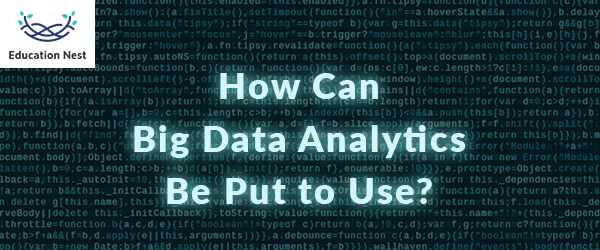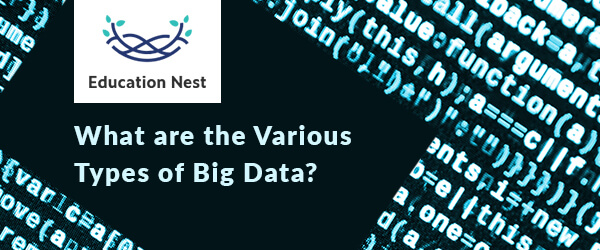Are you wondering what big data analytics is? Have you ever thought of big data analytics meaning and uses? Well, this blog will provide you with tons of information about big data analytics and transform you into an informed person. To begin with, let us understand what big data analytics is.
Big Data Analytics Definition
The term “big data analytics” refers to the practice of mining massive datasets for useful insights and information. These procedures make use of well-known methods of statistical analysis, such as clustering and regression, and extend them to larger datasets with the use of cutting-edge software. The term “big data” has been popular ever since the early 2000s, when advances in computer technology finally allowed businesses to deal with massive volumes of unstructured information. Since then, new technologies, such as Ecommerce and smartphones, have significantly increased the quantity of data accessible to enterprises. Hadoop, Spark, and NoSQL systems were developed as early innovation projects to store and handle large amounts of data in response to the data explosion. Data engineers are always looking for new methods to combine the voluminous and varied data produced by sensors, networking, transactions, smart devices, online traffic, and other sources. Even today, more sophisticated insights are being discovered and scaled by combining big data analytics tools with newer technologies like machine learning.
What Is The Importance of Big Data?
Big data analytics allows businesses to make better use of their data and discover untapped possibilities. As a result, businesses are able to make better decisions, streamline their processes, increase their profitability, and delight their clientele. Big data and sophisticated analytics provide several benefits for businesses. Let’s see what are big data analytics benefits.
Creating and promoting innovative goods and services: Analytics’ ability to evaluate client requirements and satisfaction enables organisations to provide customers with what they require and when they require it. With the use of big data analytics, many businesses can create cutting-edge items to satisfy their consumers’ evolving wants and demands.
Expense Minimization: Big data technology, such as cloud-based analytics, can drastically cut down on the price tag associated with storing huge amounts of information. Big data analytics also helps businesses by discovering new, productive processes.
Better, more rapid decision-making: In-memory analytics allows organisations to evaluate data in real-time and make quick, educated choices by analysing data from new sources, such as streaming information from the Internet of Things.
How Can Big Data Analytics Be Put to Use?

Big data analytics might be applied in a wide variety of settings, each of which has the potential to further a company’s goals. Some instances are as follows:
- Improving the quality of service provided to customers via the use of analytics aimed at gaining insight into their habits and preferences
- Making more informed business choices via anticipation of future trends
- Modifying marketing strategies based on what has worked and what hasn’t
- Optimising business processes by identifying and eliminating inefficiencies
- Early detection of theft and other kinds of misconduct
These are only a few big data analytics applications, the potential applications of big data analytics are almost limitless. The answer lies in your plans to use it to boost productivity inside your company.
What are the Various Types of Big Data?

The four main categories of big data analytics with examples are as follows:
Descriptive Analytics: This compiles information from the past into an understandable format. This is useful for compiling financial and other business-related reports. It is also useful for compiling statistics on your social media activity.
Application: A chemical corporation used historical data analysis to better allocate its office and laboratory space. The company was able to locate unused areas by using descriptive analytics. The yearly cost savings obtained from this relocation initiative are close to US $4 million.
Analytical Diagnostics: This is done so that the root of the issue may be identified and addressed. Methods like drill-down analysis, data gathering, and data restoration are just a few examples. Diagnostic analytics are used by businesses because they can shed light on underlying issues.
Example: An online retailer’s sales have dropped, yet shoppers keep adding items to their baskets. The form might not have loaded properly, the shipping cost may be excessively expensive, or there may be insufficient payment alternatives. Diagnostic analytics can help you figure out what’s going on here.
Analytics for Prediction: This kind of analytics utilises both past and current information to foretell future outcomes. Predictive analytics is a method of analysis and prediction that draws on data mining, artificial intelligence, and algorithms to get insight into the future. It is effective in gauging the future of the market and the tastes of consumers.
Example: PayPal evaluates the level of protection necessary to safeguard its customers against fraudulent transactions. Using predictive modelling, the business compiles information about past purchases and customer habits into a model that can foresee fraudulent transactions.
Prescriptive Analytics: Prescriptive analytics like this one are used to determine the best course of action for fixing an issue. Analytics from a new angle may be used in conjunction with traditional methods like predictive and descriptive analytics. Artificial intelligence and machine learning are often used.
Example: Predictive analytics can help an airline increase its bottom line. Data analytics like these are used to program an algorithm that can automatically change flight pricing in response to changes in demand, supply, weather, destination, peak travel times, and oil prices.
Related Post: A Beginner’s Guide to using SPSS for Data Analysis
Various tools for Big Data Analytics
The below mentioned big data analytics tools are the ones you should know about:
- Hadoop is useful for data storage and analysis.
- MongoDB is often implemented on frequently shifting datasets.
- Talend is a tool used for managing and integrating data.
- A distributed database called Cassandra is used to process large data sets in pieces.
- Spark is a program that can handle and analyse massive volumes of data instantly.
- Kafka is a fault-tolerant streaming platform that uses a distributed architecture.
What are the big data analytics applications?
After understanding the big data analytics definition, various types and tools, let’s see where big data analytics applications are possible.
- Big data analytics are used in e-commerce for a variety of purposes, including predicting consumer patterns and optimising pricing.
- High-return-on-investment marketing efforts are driven by Big Data analytics, which in turn improves sales.
- Market needs-based course creation and improvement in higher education
- In the medical field, Big Data analytics is utilised to foresee the likelihood of health problems for individual patients based on their past treatment records.
- Identifying user preferences for media content such as TV programmes, movies, music, and other forms of entertainment in order to provide a curated list of suggested viewing, listening, and reading options.
- Finance – Customers’ income and spending habits may be used to estimate how likely they are to accept a variety of banking offerings, such as loans and credit cards.
- Telecommunications – Used for capacity planning and customer satisfaction enhancement
- Law enforcement is only one area where governments might benefit from Big Data analysis in the public sector.
Since data affects every aspect of modern life, there is a significant need for people trained to analyse and interpret information. I hope the information shared in this blog has helped in learning about characteristics of big data analytics and its importance.
